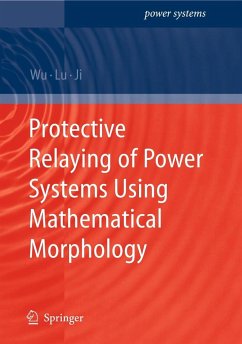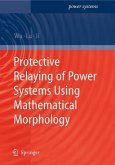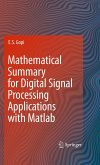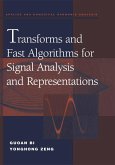The basic operating principles of the most common types of protection relays have not changed for more than half a century. However, the calculations used to measure power system fault signals continue to cause problems with relay performance. As a result, there is a need for developing a next generation of protection relays which are more accurate, more reliable and faster than the conventional relays.
Protective Relaying of Power Systems Using Mathematical Morphology discusses the development of novel protective relaying algorithms using Mathematical Morphology (MM). MM is a nonlinear signal processing technique derived from set theory and geometry. It analyses signals in terms of shape by retrieving the features of the signals using a pre-defined structuring element. The book introduces the fundamental principles, and brings together the applications of MM to develop new protective relaying algorithms for the protection of a variety of power system components (including transmission lines, bus, and power transformers), as well as for the distorted waveform detection and compensation which are required for the operation of many conventional relays.
Protective Relaying of Power Systems Using Mathematical Morphology is an ideal source of information for researchers or postgraduates in the fields of power and engineering, as well as for power engineers.
Protective Relaying of Power Systems Using Mathematical Morphology discusses the development of novel protective relaying algorithms using Mathematical Morphology (MM). MM is a nonlinear signal processing technique derived from set theory and geometry. It analyses signals in terms of shape by retrieving the features of the signals using a pre-defined structuring element. The book introduces the fundamental principles, and brings together the applications of MM to develop new protective relaying algorithms for the protection of a variety of power system components (including transmission lines, bus, and power transformers), as well as for the distorted waveform detection and compensation which are required for the operation of many conventional relays.
Protective Relaying of Power Systems Using Mathematical Morphology is an ideal source of information for researchers or postgraduates in the fields of power and engineering, as well as for power engineers.








